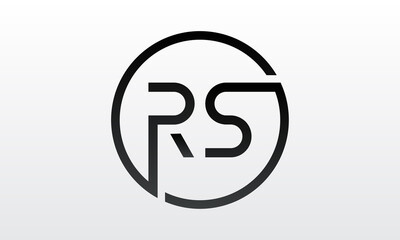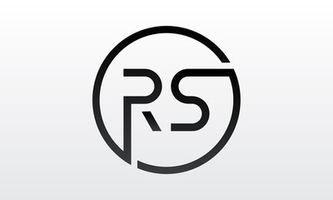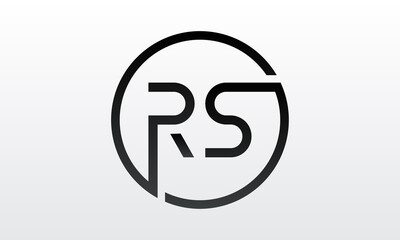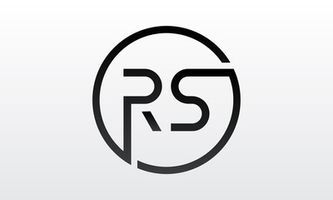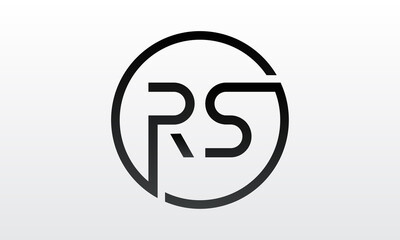Information
-
Site conducted
-
Document No.
-
Audit Title
-
Client / Site
-
Conducted on
-
Prepared by
-
Location
-
Personnel
-
Executive Summary:
Explanation
Relationship between System, Process and Product Audit
-
System, process and product audits represent a selection of the audit types available; however, this listing does not claim to be exhaustive. Comparison of the audit types : Audit Type / Subject / Purpose
System Audit
---> Quality System
---> Assessment of the completeness and effectiveness of the basic requirements.
Process Audit
---> Product development process / Serial production
---> Service development process / Providing the service
---> Assessment of the quality capability for specific products/product groups and their processes
Product Audit
---> Products or services
---> Assessment of quality characteristics
Process audits may be initiated, e.g., for the following reasons: decreasing process quality, customer complaints, and changes in the production sequence, - process insecurities, cost reductions, internal request.
Process audits can be applied internally and externally across the full quality cycle in the following areas: Marketing, Development, Purchasing (Product/Service), Production/Service Provision, Sales/Commissioning, Customer Service/Services, Recycling
Individual Evaluation of the Questions and Process Elements
-
Each question is evaluated with regard to the respective requirements and their consistent achievement in the product development process (service process) and the serial production (service). The evaluation can result in 0, 4, 8, 10 points for each question, whereby the proven compliance with the requirements is the measure for awarding points. For a grading under 10 points corrective actions with deadlines have to be determined.
Evaluation of compliance with individual requirements
10 - Full compliance with requirements
8 - Predominant compliance with requirements; minor nonconformities *
6 - Partial compliance with requirements; more severe nonconformities
4 - Unsatisfactory compliance with requirements, major nonconformities
0 - No compliance with requirements
(*) Predominant means, that more than ¾ of all requirements have proven to be effective and no special risk is given.
The degree of conformity EE of a process element is calculated from:
Sum of all points awarded for the respective questions
EE [%] = ------------------------------------------------------------------- x 100%
Sum of all possible points of the respective questions
Product Development Process
OVERALL GRADE
-
OVERALL GRADE
Grade. % Description of the grading
A 90 to 100 Full compliance.
B 80 to less than 90 Partial compliance
C less than 80 No compliance -
Downgraded?
-
Overall degree of conformity in %
P 2 Project Management
-
The internal planning objectives of a new product, based on the customer requirements and legislation to be considered, must already be raised at the quotation phase, which are then to be put into precise terms and included in a product development plan, after receipt of contract. All necessary tasks with achievable goals and deadlines must be named in the product development plan. The requirements on the product are often higher than the customer requirements and must be analyzed and specified in detail by the supplier. Through continual re-examination of all requirements, changes can become necessary during course of the planning phase.
EXAMPLES: Project management, project planning team/responsibilities, Qualified personnel, Resources studies, Information flow from and to the customer during planning (regular meetings, conferences). -
2.1 Is the project organisation (project management) established and are tasks & authorities specified for the team leader and team members?
-
2.2* Are the resources required for the project development planned and available and are all changes displayed?
-
2.3 Is there a project plan and has this been agreed with the customer?
-
2.4 Is change management in the project ensured by the project organisation?
-
2.5* Are the responsible personnel within the organisation and in the customer's company involved in the change control system?
-
2.6 Is there a QM plan for the project? Is this implemented and monitored regularly for compliance?
-
2.7* Is there an established escalation process and is this implemented effectively?
P 3 Planning Product/Process Development
P 3 Planning Product/Process Development PRODUCT
-
The internal planning objectives of a new product, based on the customer requirements and legislation to be considered, must already be raised at the quotation phase, which are then to be put into precise terms and included in a product development plan, after receipt of contract. All necessary tasks with achievable goals and deadlines must be named in the product development plan. The requirements on the product are often higher than the customer requirements and must be analyzed and specified in detail by the supplier. Through continual re-examination of all requirements, changes can become necessary during course of the planning phase.
EXAMPLES: Drawings, standards, specifications, performance specification, Logistic concepts, Technical specifications, test specifications, Quality agreements, target agreements, Important product/process characteristics, Purchase order documents with parts lists and delivery dates, Legislation/Directives, Waste management plans, environmental aspects. -
3.1 Are the product‐specific requirements laid down?
-
3.2* Has manufacturing feasibility been assessed in a cross-functional manner, based on the requirements which have been determined for product & process?
-
3.3 Are there plans for the product and process development?
-
3.4 Have the necessary resources been taken into account for the product and process development?
-
3.5 Is QM planning arranged for sourcing bought‐in products and services?
P 3 Planning Product/Process Development PROCESS
-
Basic planning for the manufacture of a product to customer requirements, must already have taken place at quotation stage, which must then be put into precise terms and included in a process development plan, after receipt of contract. Technical and personnel resources, already available, must be considered and expansions preplanned. When setting all tasks, objectives and deadlines, all interfacing areas are to be included through interdisciplinary cooperation. All tasks and responsibilities are to be clearly established. When planning and implementing processes, amendments can become necessary due to changed customer requirements or special legislative requirements, which also make a reexamination of the planning necessary.
EXAMPLES: Legislative requirements, Capability records, Suitability of plants, tools, inspection and test equipment, Arrangement of work and inspection stations, Handling, packaging, storage, marking, All production stages, including those of suppliers, Customer requirements, function, Important parameters/characteristics, Traceability, environmental aspects, Transport (internal/external), Involvement all affected areas, Process-specific measures from the design FMEA. -
3.1 Are the process‐specific requirements laid down?
-
3.2* Has manufacturing feasibility been assessed in a cross-functional manner, based on the requirements which have been determined for product & process?
-
3.3 Are there plans for the product and process development?
-
3.4 Have the necessary resources been taken into account for the product and process development?
-
3.5 Is QM planning arranged for sourcing bought‐in products and services?
P 4 Realization Product/Process Development
P 4 Realization Product/Process Development PRODUCT
-
In the realization phase of product development, all defined task of the product plan are to be carried out, possible amendments are to be recognized and considered. The project manager/project management have the decisive task of involving all interfacing areas early in all exercises and of informing the company management and if necessary, also the customer, of any problems which arise. During the realization, reviews are to be carried out at set regular intervals. When targets are not achieved, corrective actions are to be established, implemented and monitored for their effectiveness.
EXAMPLES: Product trials (e.g. fitting inspections, functional tests, durability checks, environmental simulations), Status of the prototype parts, Pilot series model, Production/inspection, measuring and test equipment in experimental installation, establishing and marking of significant characteristics, raising of an inspection and test plan, provision of equipment and fittings, timely, planned provision of measuring equipment, inspections at appropriate points during the production, clarification of acceptance criteria -
4.1 Have the Product FMEA / Process FMEA been drawn up? Are they up‐dated as the project progresses and are corrective actions laid down?
-
4.2 Are the stipulations arising from the plans for product and process development put into effect?
-
4.3 Are the personnel resources in place and qualified?
-
4.4 Is the infrastructure in place and appropriate?
-
4.5* Based on the requirements, are the necessary evidence and releases available for the various phases?
-
4.6 Are the productions control plans used for the various phases and are production, test and inspection
-
4.7 Has a pre‐production run been carried out under serial production conditions to obtain production approval / release?
-
4.8 Are the planning activities associated with sourcing outside products and services implemented effectively?
-
4.9 Is the transfer of the project to production controlled in order to secure the product launch?
P 4 Realization Product/Process Development PROCESS
-
In the realization phase of process development, all defined tasks from the planning of the processes (Process development plans) are to be carried out, possible amendments are to be recognized and considered.
For project management/monitoring, the project manager has the decisive task of involving all interfacing areas in all task at an early stage and of informing the company management and if necessary, also the customer of any problems which arise. During the realization, reviews are to be carried out at set intervals. When targets are not achieved, corrective actions are to be determined, implemented and monitored for their effectiveness.
EXAMPLES: Product trials (e.g. fitting inspection, functional test, durability check, environmental simulations), Pilot production parts, First sample, Capability records of important product/process characteristics, Logistic concept (e.g. checking suitability of packaging by a test dispatch), Tools, machines, equipment, inspection, measuring and test equipment, Establishing minimum numbers of production pieces, Process capability analysis, Measuring equipment capability, Readiness of the production materials and equipment for series (measuring records), First sample inspection, Handling, packaging, marking and storage, Personnel qualification, Work/Inspection instructions, Arrangement of work/inspection stations, Process parameters (e.g. pressures, temperatures, times, speeds), Machine/tool/auxiliary means data, Inspection requirements (important characteristics, inspection, measuring and test equipment, methods, inspection frequencies), Intervention limits in process control charts, Machine and process capability records, Operating instructions, Work instructions, Inspection instructions, Information on the current nonconformities. -
4.1 Have the Product FMEA / Process FMEA been drawn up? Are they up‐dated as the project progresses and are corrective actions laid down?
-
4.2 Are the stipulations arising from the plans for product and process development put into effect?
-
4.3 Are the personnel resources in place and qualified?
-
4.4 Is the infrastructure in place and appropriate?
-
4.5* Based on the requirements, are the necessary evidence and releases available for the various phases?
-
4.6 Are the productions control plans used for the various phases and are production, test and inspection
-
4.7 Has a pre‐production run been carried out under serial production conditions to obtain production approval / release?
-
4.8 Are the planning activities associated with sourcing outside products and services implemented effectively?
-
4.9 Is the transfer of the project to production controlled in order to secure the product launch?
Action Deck
ACTION DECK:
-
P 2 Project Management
P2 #
-
Action:
-
By Whom:
-
By When:
-
P 3 Planning Product/Process Development
P 3 #
-
Action:
-
By Whom:
-
By When:
-
P 4 Realization Product/Process Development
P 4 #
-
Action:
-
By Whom:
-
By When:
Signatures
SIGNATURES
AUDITOR(S)
-
Auditor #
-
Add signature
AUDITEE(S)
-
Auditee #
-
Add signature
